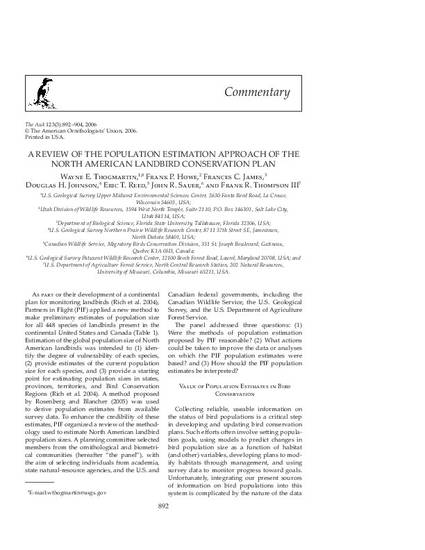
Article
Review of the Population Estimation Approach of the North American Landbird Conservation Plan
The Auk
(2006)
Abstract
As part of their development of a continental plan for monitoring landbirds (Rich et al. 2004), Partners in Flight (PIF) applied a new method to make preliminary estimates of population size for all 448 species of landbirds present in the continental United States and Canada (Table 1). Estimation of the global population size of North American landbirds was intended to (1) identify the degree of vulnerability of each species, (2) provide estimates of the current population size for each species, and (3) provide a starting point for estimating population sizes in states, provinces, territories, and Bird Conservation Regions (Rich et al. 2004). A method proposed by Rosenberg and Blancher (2005) was used to derive population estimates from available survey data. To enhance the credibility of these estimates, PIF organized a review of the methodology used to estimate North American landbird population sizes. A planning committee selected members from the ornithological and biometrical communities (hereafter “the panel”), with the aim of selecting individuals from academia, state natural-resource agencies, and the U.S. and Canadian federal governments, including the Canadian Wildlife Service, the U.S. Geological Survey, and the U.S. Department of Agriculture Forest Service.
Disciplines
Publication Date
2006
DOI
https://doi.org/10.1093/auk/123.3.892
Citation Information
Frank Howe. "Review of the Population Estimation Approach of the North American Landbird Conservation Plan" The Auk Vol. 123 Iss. 3 (2006) p. 892 - 904 Available at: http://works.bepress.com/frank_howe/9/
